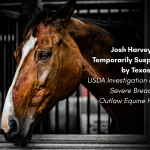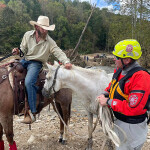Focusing on a horse’s aerobic and anaerobic condition is key to making sure the horse’s overall fitness is well established for field work. And the good news is, as your horse builds its overall fitness, it will already have begun to build strength, protecting your horse from injury.
Field trial and hunt season is here. Professional and amateur handlers worked their bird dogs throughout the summer, and masters of hounds condition their pack of hound dogs leading up to fox hunt season. But what about our hunt horses? With high heat and humidity during the summer many field trial and hunt horses may start the season off in less than ideal condition. If your horse is one that did not have the benefit to train in the prairie throughout the summer prairie training season or attend summer horse shows or horse trials, then here are a few ways to help your horse build the strength, stamina, and overall fitness for hunt and trial season.
Focus on aerobic and anaerobic exercises
Focusing on a horse’s aerobic and anaerobic condition is key to making sure the horse’s overall fitness is well established for field work. Anaerobic work includes short trot and canter/ gallop work that last for 20 to 30 minutes. Short and consistent anaerobic work will help build muscular, cardiovascular, respiratory, and skeletal system strength. It is important to condition your horse with anaerobic exercises consistently and start with lower levels and slowly progress to moderate and higher intensities as the horse builds overall fitness.
A consistent schedule that will help improve a horse’s fitness includes low to moderate intensity work at least three times per week. Ideally you will want to start this training schedule eight to twelve weeks out from consistent hunts or trials to ensure your horse has a proper fitness level going into the season.
As you put consistent time on your horse, you can then begin to increase the mileage and time in the saddle. A rider can begin to drop from three shorter, moderate riding sessions to two per week. A longer riding session can then be added. These longer sessions should last for two to three hours, once per week. This will begin to condition your horse’s aerobic strength and metabolism and prepare your horse for longer trials and hunts that have horses working over hundreds of acres.
These longer training rides can be thought of as your “wet saddle pad” rides. It is important to make sure your horse is well conditioned for these types of riding sessions to help protect your horse from fatigue and potential injury. Remember walking is a crucial part of your longer training rides and are just as important as short trot and canter sessions while building endurance and strength.
Protect against bone and soft tissue injuries
The good news is, as your horse builds its overall fitness, it will already have begun to build strength, protecting your horse from injury. As your mount builds aerobic and anaerobic strength, it also builds muscle tone and ligament strength. Strength training reduces the risk of injury by 50%. It helps stabilize joints and reduces strain on ligaments and tendons.
This is extremely important for field trial and hunt horses due to the terrain these horses work over. The winter hunt and trial season is during the wet months of the year. This means horses are working over wet, slick, and muddy terrain. Deep mud is one of the top culprits for tendon injuries in trial and hunt horses. When a horse is trotting or cantering through deep mud there is an increase in potential twists and sprains to the lower leg and hoof causing injury to delicate lower leg tendons and ligaments.
When focused on anaerobic exercises and rotating between active trot, canter, and working walk sessions, this will help stabilize loose and unconditioned muscles, tendons and ligaments. On top of consistent training between multiple gaits and speed work, hill work is very important for overall strength training and muscle development.
Remember that hoof health and shoeing is a pivotal piece to keep horses injury free. Make sure you work closely with your farrier to ensure your horse’s hooves are healthy and that they have proper shoeing or routine trims to help protect their hooves from a wide range of terrain.
Selecting the right nutrition
Nutrition is the fuel that keeps our horses going and helps develop overall fitness. If a horse does not have proper nutrition it cannot perform and progress in training and strength. As your horse uses short bursts of energy, it is important to make sure your horse’s feed has adequate levels of carbohydrates and sugars to fuel higher energy levels.
As your horse progresses and shifts to longer training sessions that require a good amount of cardiovascular and muscle strength, consider a performance feed that has good amounts of fat and amino acids to keep your horse’s energy and overall body condition at peak levels to support long endurance rides that last three or more hours.
Consulting with a specialized performance equine nutritionist can be very helpful if you have a horse that is a hard keeper or who is displaying chronic fatigue. Discussing ideal nutritional plans and supplements with your veterinarian is essential for all performance horses, especially trial and hunt horses who may be ridden for upwards of three to five hours at a time.
Build in Rest and Recovery time for horses
Just like humans, bird dogs, and hounds, make sure your horse has periods of rest and recovery after intense exercise. Every time a horse works, tiny fibers in the muscles tear. As the muscle recovers and the fibers mend the muscle becomes stronger. Giving proper time for recovery is key to building strength and fitness. If the horse does not have rest and down time, it can lead to overuse injuries and poor condition.
As we enter the trial and hunt season, make sure you don’t neglect your horse’s overall fitness and readiness for high intense rides. It is unfair to the horse to not take proper time to build up endurance, stamina, and strength prior to the first field trial or fox hunt. Remember, horses are just like humans and dogs: with the lack of consistent training, the overall performance will suffer. With proper conditioning, the risk of injury will reduce and keep our horses healthy throughout a busy season.










